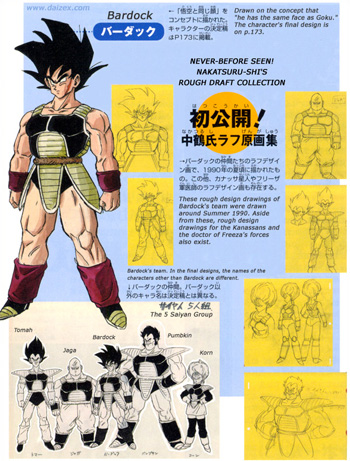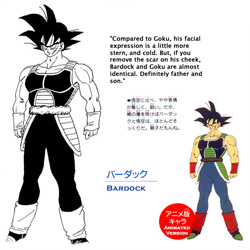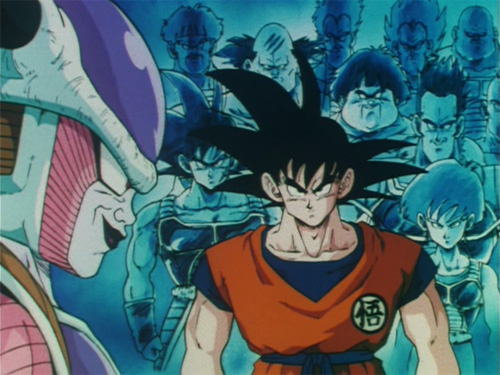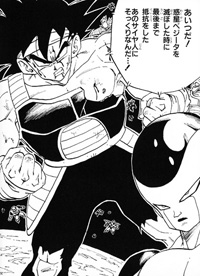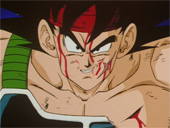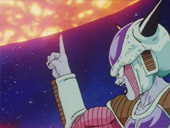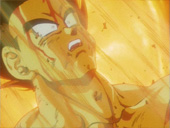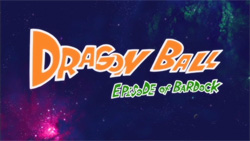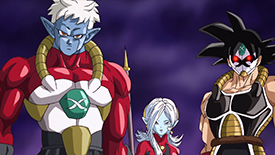Most of the material in the Dragon Ball Z television series is based on the original manga. Material that is new to the series is called “filler” — it “fills” up time between events that were present in the original manga. Sometimes this filler can create inconsistencies, however; Toei Animation (the company responsible for the anime) would sometimes create new stories and characters that would contradict the original story or plot-points that original author Akira Toriyama would introduce later on in the series (see: Dr. Frappe vs. Dr. Gero).
Generally, Toriyama would ignore this filler and continue on with his story. There is one example of “filler,” however, that became (ever so slightly) incorporated into the manga storyline: a guy named “Bardock”.
The Design
Toriyama was consulted for character designs for a great deal of movie and television special characters. Villains such as Coola and Broli were actually originally designed by Akira Toriyama, despite only appearing in the theatrical features.
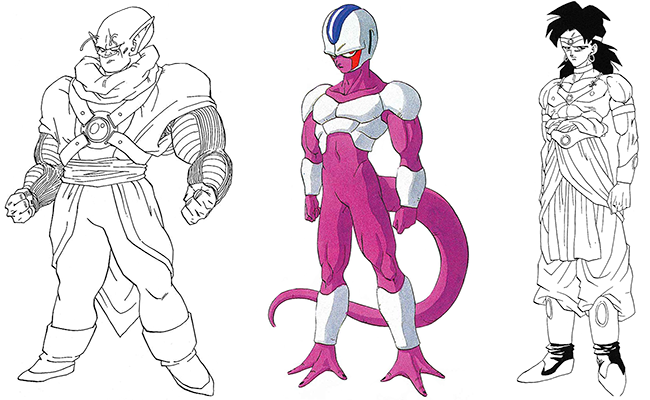
This is not where Bardock’s story begins, however.
Katsuyoshi Nakatsuru is one of the most prolific members of the production staff, responsible for a great deal of animation supervision and character designs during the television series’ run, as well as commissioned to do an astonishing amount of official merchandise artwork (both in the past and present). In fact, there have been instances where Toriyama himself has not been sure whether a particular drawing was his or Nakatsuru’s!
Nakatsuru was initially given the task of designing Bardock and his crew for the upcoming television special in the summer of 1990. His initial Bardock design remained relatively unchanged, but the designs and names for Bardock’s crew vastly differed from the final versions (click for larger version).
While Jaga (who would become Totapo) remained relatively close to the design and name pun (jagaimo meaning “potato”), Tomah (Toma) received a haircut and a different syllable emphasis, Pumbkin (Panbukin) received a slightly rearranged name, and Korn (Selypa) received an entire overhaul.
The adjustments here come by way of Toriyama himself, who tossed in his own ideas, offering suggestions on what the color of Saiyan hair should be, as well as updating the names of the characters.
My personal thought is that Saiyan hair is black, but I also planned for them to have distinguishing features, so I changed them like this. But since it seems like you want the colors to be a little more varied, I won’t mind, even if it’s not black. (I’ve selfishly gone and changed the names, as well…)
Interestingly enough, the eyecatches (and final shot that concludes the ending theme) to the television special showcase some of the original Katsuyoshi Nakatsuru character designs in the background behind their “updated” versions. It was certainly a nice Easter-egg to toss into the production, and one many fans could not fully understand or appreciate until so many years later.
Incorporating the Character
Up until this point, there had been no mention of Goku’s “father” in the manga, save for a minor comment Raditz made about Goku looking like their father. The television special would be produced brand-new, exclusively for television. Amazingly, Toriyama was so enthralled with the feature, that he actually incorporated the character of Bardock into the manga.
Personally approved by Akira Toriyama himself, Bardock became incorporated in the manga storyline as an actual character… if only for two panels!
Dragon Ball Z episode 86 (aired 10 April 1991) contains the events corresponding to the above chapter’s events. In the episode, scenes from the television special (which had aired earlier on 17 October 1990) are shown in place of Toriyama’s own “flashback” (which technically does “flash back” to the events of the television special).
Toriyama addressed the character of Bardock and the overall television special in his “Super Interview” within the sixth Daizenshuu in 1995:
I really like the story of Bardock, Goku’s father. It’s quite dramatic, and the kind of story “I absolutely wouldn’t draw” if it were me. It was like watching a different kind of Dragon Ball in a good way, so I thought it was nice.
A 2011 home video release — the “Special Selection” DVD — served as the individual disc release for the Bardock and Trunks television specials, items previously relegated to extras within the larger, more-expensive Dragon Box collections. As a bonus, Toriyama provided a new sketch of Bardock along with some reflections on the character. While history is a bit muddled in his explanation, Toriyama’s overall sentiments about the special remain the same as two decades prior.
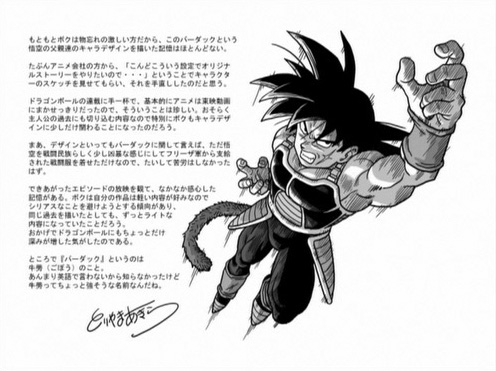
I’m always forgetting things to begin with, so I have almost no memory of drawing the character design for Goku’s father Bardock and co.
I think what probably happened was, somebody from the animation company came to me and said, ‘we’d like to an original story based on these designs…’ and when I had them show me the sketches, I ended up redoing them.
I had my hands full just with Dragon Ball‘s manga serialization, and I basically left the anime up to Toei Animation, so that sort of situation was rare. Perhaps it was because the content impinged upon the past of the main character that I was specially called upon to be involved a little bit with the character designs.
Well, even calling it a ‘design’, with regards to Bardock, all I really did was take Goku and give him the brutal edge of a warrior race, and dress him in the battle armor provided by Freeza’s forces, so I can’t have gone to too much trouble.
When I saw the finished episode, I remember feeling a good bit of admiration. With my works, I prefer lighthearted fare, so I have a tendency to avoid serious material. Even if I had written about the same past, it would have become lighter in tone by far. Thanks to this, I felt as though even Dragon Ball had been given a little bit more depth.
By the way, ‘Bardock’ refers to burdock [in Japanese, ‘gobô’]. I didn’t realize it, not usually saying it in English, but ‘burdock’ is a pretty strong-sounding name, isn’t it?
–AKIRA TORIYAMA
That all being said, it turns out that Bardock’s story could have taken a completely different path. The final supplemental Daizenshuu‘s “Animation Gleanings” column notes that an initial plan for the special involved Bardock and Goku being enemies!
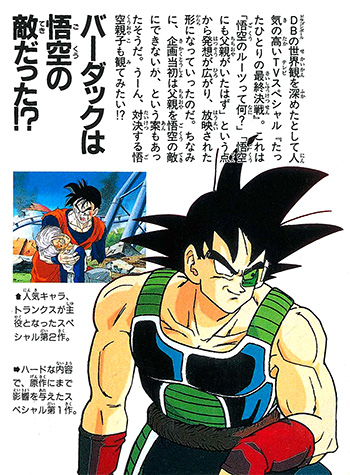
Bardock was Goku’s enemy?!
The TV special, A Final, Solitary Battle, is quite popular for having given greater depth to the world of Dragon Ball. This concept grew out of the points, “What were Goku’s roots?” and “Goku must have had a father”, and developed into the form that aired. Incidentally, in the initial plan, we hear that there was also the suggestion that perhaps they could make Goku and his father enemies. Hmm… we want to see Goku and his father face off!?
Beyond the 1990s: Video Game Inclusions
For years upon years upon years, that is where the story stood: Bardock was a seemingly well-loved character, popping up in video games and receiving figures where appropriate.
In the July 2011 issue of Shueisha’s video game-focused magazine V-Jump, a vague reference was made to an upcoming “Dragon Ball Heroes”-related feature in the next month’s issue, stating:
In addition to the popular Dragon Hero Newspaper, manga will be published too!!
Details were sparse. What would this be? Mistranslations and assumptions flooded fandom, but it was eventually revealed via the official V-Jump website that spin-off author Naho Ooishi would actually be taking on yet another “special project”.
As part of a new update for “Dragon Ball Heroes” (the latest card-based arcade game for the franchise in Japan), Bardock would be receiving a new Super Saiyan transformation. What made this update more interesting than anything that had come in recent years was the all-out media assault that it was a part of. New cards with Super Saiyan Bardock were produced for “Dragon Ball Heroes” which were even promoted on television. The original Bardock television special (along with the Trunks television special) would receive a budget-priced (¥1000) DVD — the aforementioned “Special Selection” DVD — allowing newer fans to experience the character’s origin for the first time, and long-time fans who did not own the expensive Dragon Box sets to pick it up, as well.
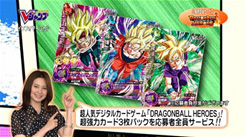

Finally, the “special project” from Naho Ooishi would be a spin-off manga entitled “Episode of Bardock“, a new story created as a “sequel” to the original television special. The story would be released in three parts over the course of August, September, and October 2011’s V-Jump issues.
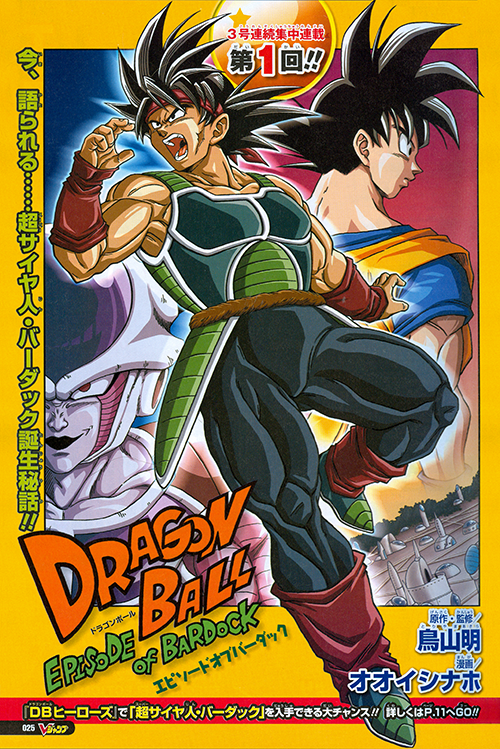
Soon afterward in November 2011, it was announced through the pages of V-Jump that “Episode of Bardock” would be receiving an animated adaptation. Details were sparse at the time, but an advance screening would be available at Jump Festa the following month, scheduled for December 17th and 18th.
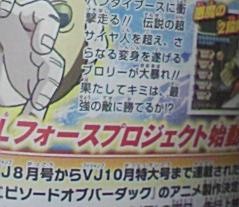
The new anime was attributed to the “Dragon Ball Force Project”, also alongside (what may be a prior or working code name for one or more of the projects) the title “Saikyō Super Saiyan Secret Project”:
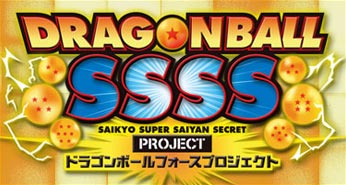
As Jump Festa came and went, it became apparent that the new special would be animated and debuted all in one shot, running approximately 20 minutes in length. Surprisingly, the special became available for free (albeit region-locked) streaming on the “Bandai Channel” website. The special was later made available also via free streaming, although this time not region-locked, on Toei Animation’s “Anime Jan” website.
The animated adaptation’s story stayed essentially the same from its manga incarnation, with a few extra bits of dialog where necessary, and a well-animated fight between Bardock and Chilled to wrap things up.
All the meanwhile, Bardock was being used in a completely different story!

Dragon Ball Online launched in beta for the Korean market in 2010. The massively multiplayer online role playing game (MMORPG) allowed players to create their own characters, explore the Dragon World, and save the timeline from interference by new villains. The game’s back-story picks up with the end of the manga and continues onward over the course of a few hundred years:
Mira, an Earthling from the future, is an artificial being created by condensing the DNA harvested from various “star seekers”. In Age 851, Mira and his army invade and destroy New Namek, forcing hundreds of Namekians to emigrate to Earth once again. In Age 999, Piccolo returns from an investigation to warn Dende and the others about Mira’s arrival on and threat to Earth, but no warrior exists to protect and save them should Mira take action. Dende creates new sets of lower-powered Dragon Balls to encourage up-and-coming warriors to rise to the challenge, leading directly into the events of the actual Dragon Ball Online game in Age 1000.
Meanwhile, Mira has stolen a Time Passport from the Time God and is wreaking havoc throughout history by creating paradoxes that strain the fabric of space and time itself. The Trunks from the future timeline has been assigned the role of a Time Patrolman in exchange for not being punished for using his mother’s time machine. Alongside other missions, Trunks and the patrol force return to Age 762 during Goku’s fight against Vegeta where they do battle with a masked man (whom they have encountered before) as well as Mira himself. The masked man is revealed to be Bardock, who turns on Mira when his mind-control device is broken during the fight. Trunks and the others return to Age 1000, but when the smoke clears it is shown that Mira is still alive.
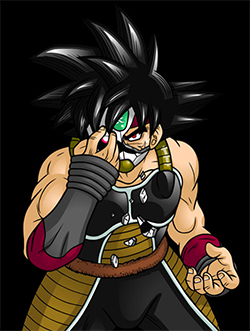
International gamers and fans may recognize some of the characters and events from this Dragon Ball Online scenario. Indeed, while Dragon Ball Online closed for good in 2013, it wound up as a sort of asset graveyard for future productions.
Alongside newcomer Demigra, Mira and Towa eventually found themselves as the main antagonists in 2015’s Dragon Ball XENOVERSE (released on the PlayStation 4, PlayStation 3, Xbox One, Xbox 360, and PC). While XENOVERSE did incorporate other Dragon Ball Online elements (such as Time Patrol Trunks and user-generated avatar characters), it primarily told its own, original story; Bardock would have to wait for the sequel.
“Time Breaker Bardock” from Dragon Ball Online was not done terrorizing the timeline, but the character took yet another detour in 2014, this time courtesy of original manga author Akira Toriyama himself.
Though Toriyama had shown Bardock in the manga and hinted at his ultimate fate, the actual story surrounding these events was, however, not shown! Fans had — logically enough — assumed that the events in the original TV special “happened” in the manga. After all, if Toriyama went so far as to not only draw a portion of these events but consistently praise them over a period of decades, why would that assumption ever change?
Toriyama Revisits Bardock
A special “Akira Toriyama Super Q&A” in the March 2014 issue of Saikyo Jump teased a massive bombshell: Goku’s mother would be revealed in the collected edition of Jaco the Galactic Patrolman (a prequel series Toriyama penned over the course of the previous year):
As for her appearance and such, you’ll find out if you read the bonus comic in the collected release of Jaco the Galactic Patrolman. Her name was Gine, and a long time ago, she fought on a four-person team together with Bardock.
Gine had a gentle personality and wasn’t cut out as a warrior, being repeatedly saved from danger by Bardock. At that time, a special emotion was born between them. Normally, Saiyans don’t have much of a notion of romance or marriage, and apart from the royal family of Vegeta, they aren’t particular about blood-relationships. Being in among all that, I suppose you could say that the pair of Bardock and Gine were those rare Saiyans who were joined by a bond other than for the purpose of reproduction. Incidentally, Gine, who was not cut out as a warrior, would go on to work at the meat distribution center on Planet Vegeta.
Said bonus chapter in the collected edition — “Dragon Ball Minus” — indeed revealed Gine as the mother of “Kakarrot” and wife of Bardock. Most shocking is that the Bardock showcased in “Minus” appears to be an entirely different “Bardock” than we had known for so long. Removed even further from the source material as Naho Ooishi’s “sequel” version in Episode of Bardock, while Toriyama’s Bardock certainly still had the raw concepts of “figured out Freeza’s plan” and “wants to do something about it”… nearly everything else was different. Gone was Bardock’s team, gone was Bardock’s unrepentant nature, and gone was Bardock’s apathy toward Kakarrot.
The 2014 “Dragon Ball Minus” bonus chapter was later incorporated into the 2018 theatrical film Dragon Ball Super: Broly, acting as an underlying basis — with the expected large amount of expanded material, of course — for roughly the first third of the film.

It was a new Bardock for a new era from yet another new author… though, in this case, the “new” author was the original franchise author himself, albeit in this case not actually this specific character’s original creator.
Video Game Inclusions Continue
Despite Toriyama’s new take on the character, Bandai Namco was not done with “Time Breaker Bardock” in terms of video game appearances. In 2015, for the fourth string of major updates to their card-based arcade game, Dragon Ball Heroes, the company dove back in to the remnants of Dragon Ball Online. “Time Breaker Bardock” once again fought for Mira, this time in the card battle arena.
The “Masked Saiyan” made the move from card-based action to traditional fighting the following year in 2016, with Dragon Ball XENOVERSE 2 following up on the first game’s story. In XENOVERSE 2, Bardock has been saved from his death at the hands of Freeza similar to the original Dragon Ball Online story, eventually breaking free from his control, turning on his masters, and even powering up to Super Saiyan 3 in the final battle.
In 2018, Bardock was revealed as a forthcoming, paid downloadable content character for Dragon Ball FighterZ, the 2D tag-team fighting game developed by Arc System Works:
The character was shown a great deal of love by the development team, with a super move incorporating his Super Saiyan transformation from Episode of Bardock alongside a nod to his original television special teammates. Bardock saw wide use in the competitive field, with many top players including him on their team for tournament play.
Back to the Past: the Dragon Ball Super manga
In the same aforementioned “Akira Toriyama Super Q&A” from the March 2014 issue of Saikyo Jump that teased the existence of Gine, Naho Ooishi asked Toriyama if we might ever see Bardock in action again, to which the author responded:
You really like Bardock, don’t you, Ooishi-san?
But unfortunately, Bardock has been dead for quite some time, so you probably won’t be able to see him in action except in stories of the past. There is the trick of having Shenlong bring him back to life, but by this point, his battle power isn’t high enough, so methinks it’d be a bit difficult.
It would take another eight years, but — like many things seemingly said off-hand in Toriyama interviews — fans would eventually get another glimpse of Bardock’s history.
A little over halfway into the “Granolla the Survivor” story arc — a manga-exclusive Dragon Ball Super story — it is revealed that none other than Bardock was responsible for saving Granolla’s life as a child during a Saiyan invasion of Planet Cereal and subsequent involvement from the Heetas.
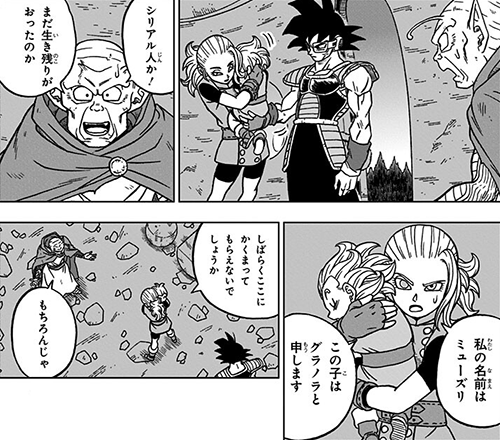
Toyotarō and Akira Toriyama provide extensive flashback material showcasing these events over the next several chapters, leading up to a greater understanding and acceptance among the heroes, particularly in the arc’s final moments.
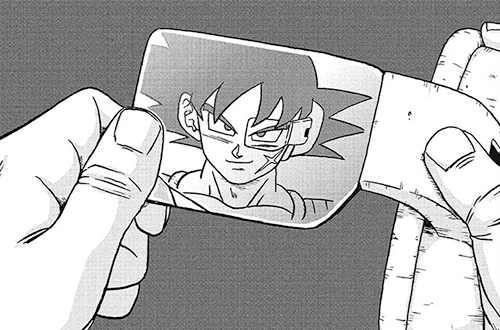
Back to the Future?!
For those whose own fandom dates back to the 1990s, it can understandably feel a little strange to see Bardock featured so heavily in modern media.
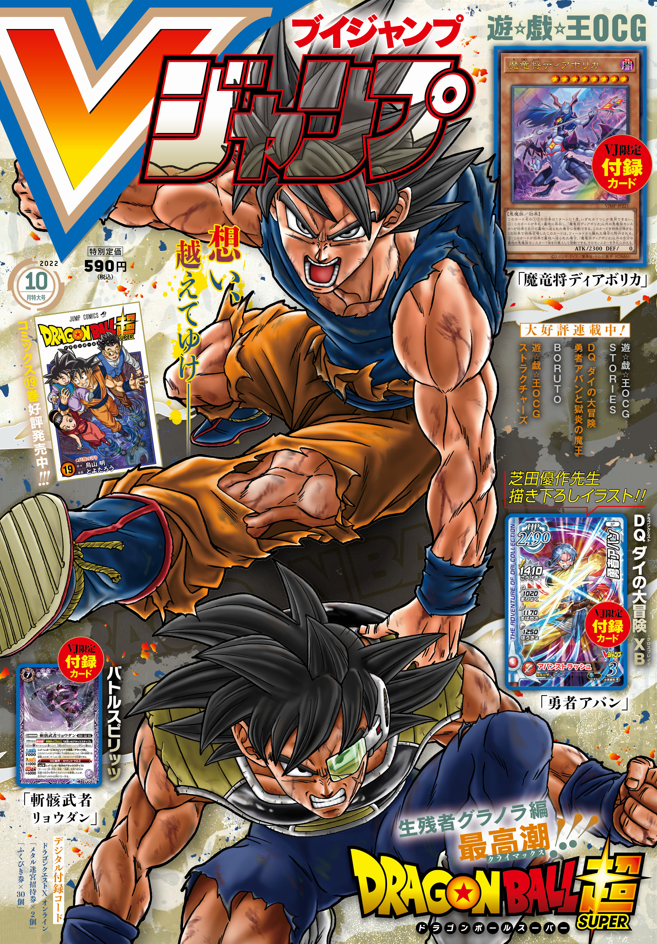
Perhaps more so than any other character, Bardock is one that authors and game designers feel can be resurrected, re-imagined, and re-invented again and again.

